Duolingo levels are a way to gauge how far you have come with the language course you are on and they are measured by how many XP you have completed. On Duolingo, the highest level you can reach in each language is level 25, which is equal to 30,000 XP.
Duolingo used to show levels in the app but took that ability away and replaced it with just a display of how much XP you have gained in total.
I think knowing what level you are on and how many XP you need to earn to get it is also super helpful!
What Is a Duolingo Level?
Duolingo Levels are 25 different levels that a user can “level up” reach by earning a certain amount of XP in one language course.
So the only thing that counts towards your Duolingo level is how many XP you are gaining, but it’s split by language course. It’s not the overall XP, but only the XP you’ve earned in that one course. So each course has its own 25 levels.
Here’s a screenshot of what that looks like, however, I will go into exactly what each part means in a bit!
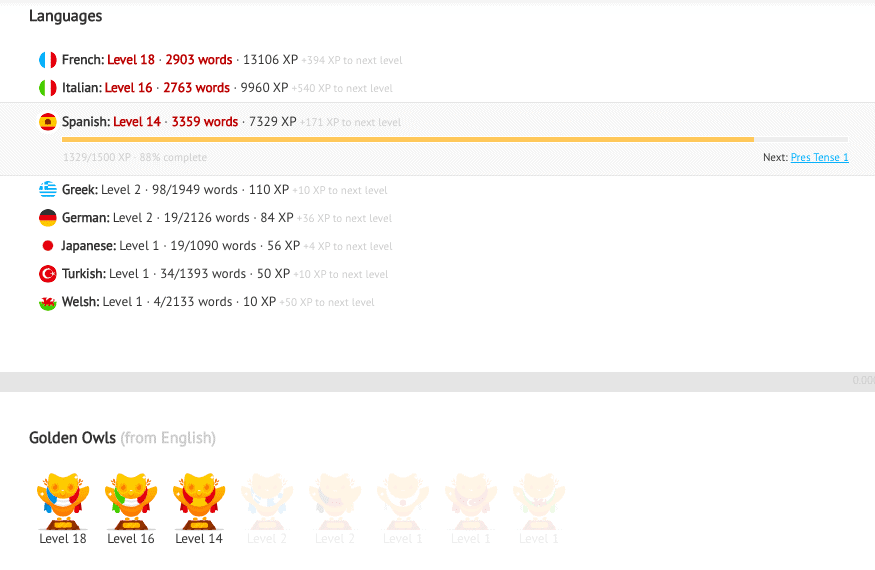
It is a motivating factor to work hard even after you have finished your Duolingo Path.
Want to know how to get Duolingo XP faster than ever? Check out this Ultimate Guide to Getting Duolingo XP FAST!
How Many Duolingo Levels Are There?
There are 25 Duolingo Levels total and you go up a level every time you earn a certain amount of XP.
The Breakdown of Duolingo Levels
Duolingo levels are done by language, so the overall amount of XP that you have earned on the app isn’t the number that is important. It’s the number for each specific language.
For example, I have earned over 60,000 XP in total, but only 13,000 XP in Italian.
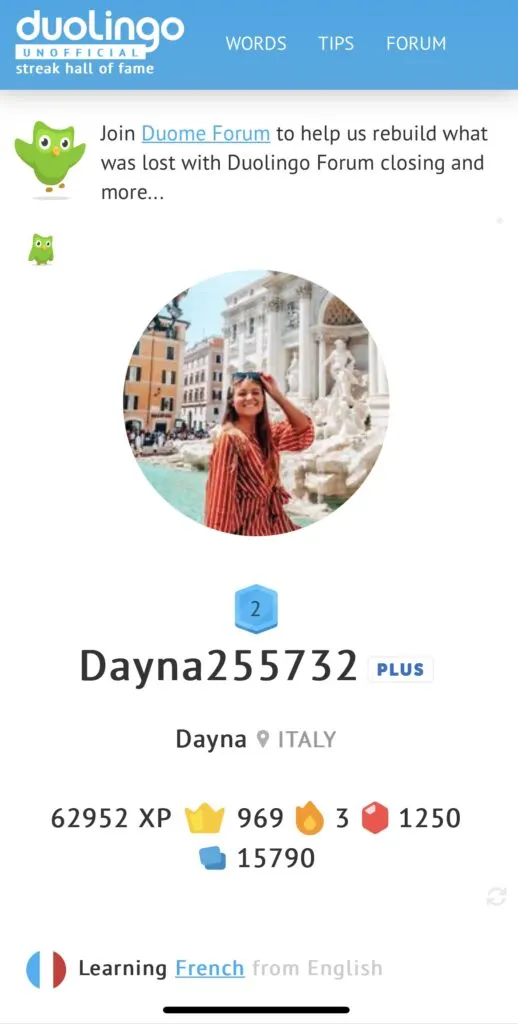
The ultimate goal for serious users on Duolingo is to hit level 25 in your language. This is the highest level possible and takes a LOT of work to get there.
The breakdown of Duolingo levels is as follows (special thanks to the Duolingo user Fantomius for creating this chart!) :
- Level 1: 0 → 59 (60 point span)
- Level 2: 60 → 119 (60 point span)
- Level 3: 120 → 199 (80 point span)
- Level 4: 200 → 299 (100 point span)
- Level 5: 300 → 449 (150 point span)
- Level 6: 450 → 749 (300 point span)
- Level 7: 750 → 1,124 (375 point span)
- Level 8: 1,125 → 1,649 (525 point span)
- Level 9: 1,650 → 2,249 (600 point span)
- Level 10: 2,250 → 2,999 (750 point span)
- Level 11: 3,000 → 3,899 (900 point span)
- Level 12: 3,900 → 4,899 (1,000 point span)
- Level 13: 4,900 → 5,999 (1,100 point span)
- Level 14: 6,000 → 7,499 (1,500 point span)
- Level 15: 7,500 → 8,999 (1,500 point span)
- Level 16: 9,000 → 10,499 (1,500 point span)
- Level 17: 10,500 → 11,999 (1,500 point span)
- Level 18: 12,000 → 13,499 (1,500 point span)
- Level 19: 13,500 → 14,999 (1,500 point span)
- Level 20: 15,000 → 16,999 (2,000 point span)
- Level 21: 17,000 → 18,999 (2,000 point span)
- Level 22: 19,000 → 22,499 (3,500 point span)
- Level 23: 22,500 → 25,999 (3,500 point span)
- Level 24: 26,000 → 29,999 (4,000 point span)
- Level 25: 30,000 and up
In the beginning, it is much easier to move up levels, and very little XP is needed, but as you get higher, you will need more XP to get up to the next level.
If you want to learn a language faster than ever, I also highly recommend reading Benny Lewis’s book on how to learn a language in JUST 3 months.
How to Figure Out What Your Duolingo Level Is
“Leveling Up” in Duolingo is a huge motivating factor for me (and many learners), so much so that an entire website was created just so that avid Duolingo users could figure out what level they were on and how many XP they needed to get to the next level.
The Duome
The Duome website is basically every serious Duolingo user’s DREAM site. It puts together all the information that you can’t find on Duolingo and makes it easy to figure out what you need to do next.
But most importantly, it spells out exactly what level you are on and how to get to the next one.
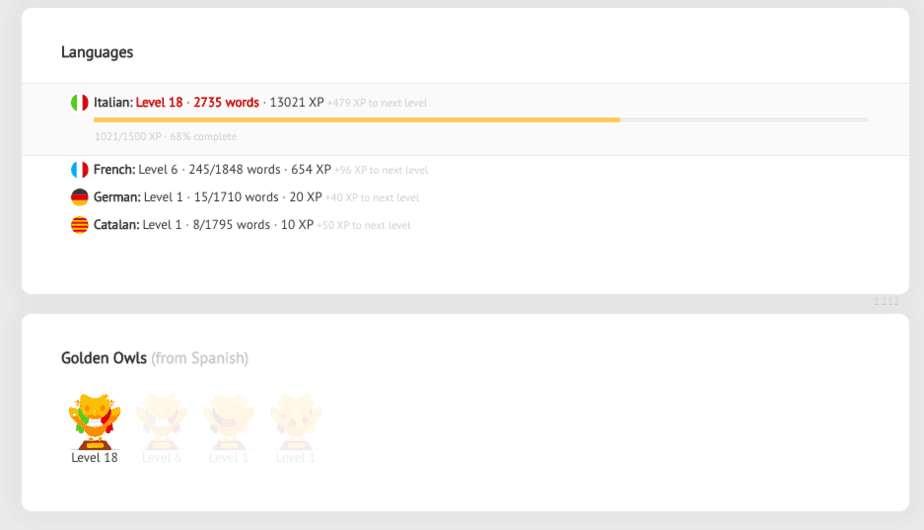
In order to find your language level on Duolingo, you need to type duome.eu/yourusernameonduolingo. In my case, this is duome.eu/dayna255732.
From there, the first thing you will see is the language stats from the language that you are currently learning.
If you are learning more than one language on Duolingo, all you need to do is go into the app, switch to your other language course, and then refresh the Duome page and it will show the stats for that language.
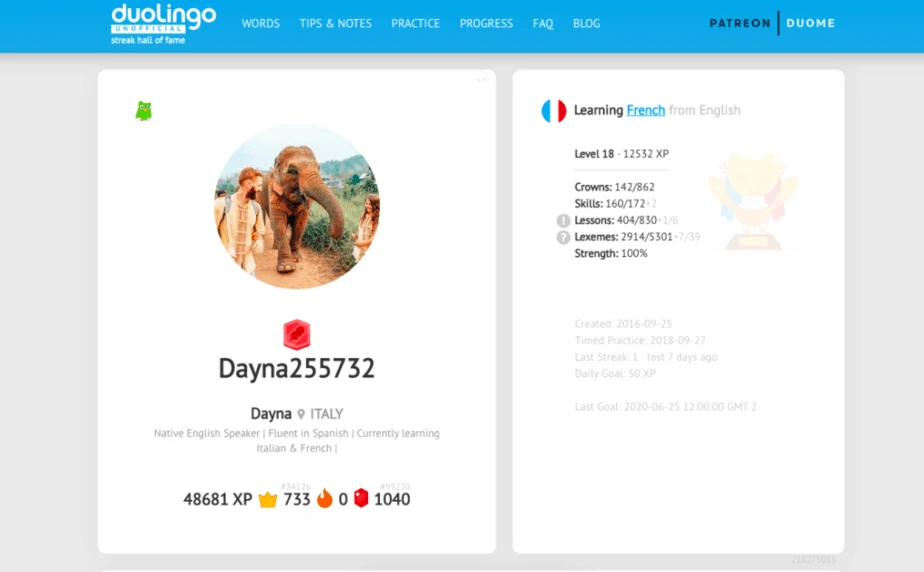
If you scroll down from there, it will show you the overall stats and language levels for all the languages that you are learning and how many Golden Owls you have (which is great since Duolingo itself doesn’t show these like they used to).
If you are doing a reverse-tree (if you don’t know what that is, make sure to read these Duolingo tricks to help you learn more on Duolingo) then you will see that not all of the stats are shown.
This page is currently only showing all the languages that I am learning FROM English.
If you want to see your Duolingo language levels for your reverse trees (languages that you are learning FROM other languages than your native language), you have to switch to that language.
Duolingo levels by percentage
One of my favorite parts of the Duome is being able to check exactly how much XP I need to get to the next level and how much I’ve finished already. The numbers are quite small, but are something that you definitely should pay attention to if you’re trying to motivate yourself to level up in Duolingo!
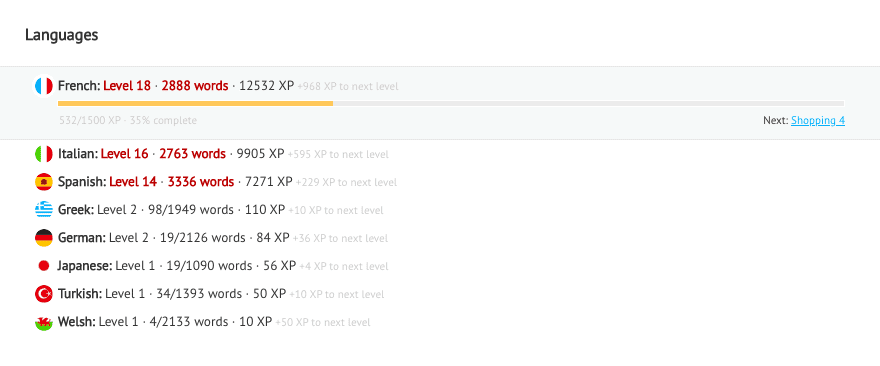
In French, I am at a Level 18 and you can see that I need 968 XP to reach Level 10. I’m 35% of the way there! UPDATE: I’m now at Level 22 and 45% there.
If you want to see those stats for your other languages, you just do what I mentioned above and switch to that course in the Duolingo app and then refresh the Duome page.
I hope that this has helped you figure out your Duolingo Level!
Want to learn how to learn a language and NEVER forget it? Check out this book on Amazon about how to stay fluent in a language over time without losing fluency!
Language Learning Must-Haves
- iTalki Language Classes: The #1 reason why I’ve been able to learn languages from home. Take conversation classes from a native speaker for only $5-$10 an hour.
- How to Be Fluent Books: Two of my favorite books about language learning have definitely got me super excited about learning a language and I highly recommend reading both!
- Fluent Forever: How to Learn Any Language Fast and Never Forget It
- Fluent in 3 Months: How Anyone at Any Age Can Learn to Speak Any Language from Anywhere in the World
- A Language Planner: Keep track of your scheduled language classes, set language goals, and organize your study schedule with my favorite planner ever.
- Harry Potter in Your Target Language: Reading a beginner book that you’re familiar with is an incredible way to learn vocabulary quickly!
- The Perfect Language Notebook
More about language learning:
- How to Earn XP FASTER Than Ever
- The Perfect Study Plan for Duolingo
- How to Use Italki to Learn for Free
- Why You Should Be Using iTalki
- Exact Steps to Change Your Daily Goal on Duolingo
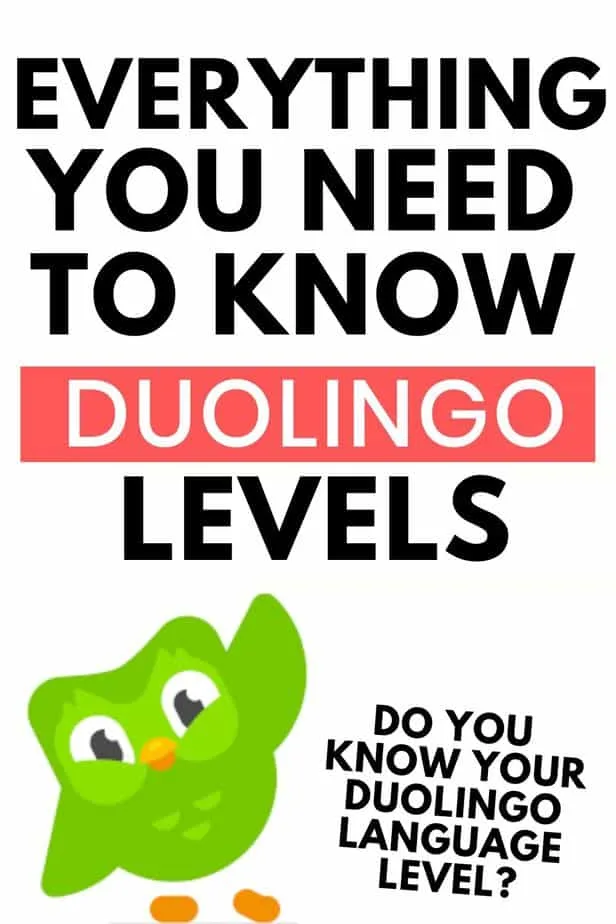

Dayna Brockbank is a travel and language-learning blogger who has lived around the world but has now settled in Nice, France. She speaks 3 languages at varying levels of fluency: Spanish, Italian, and French, and graduated with a Bachelor’s in Spanish Education. She and her husband focus on making travel part of life by living cheaply and traveling on a budget.
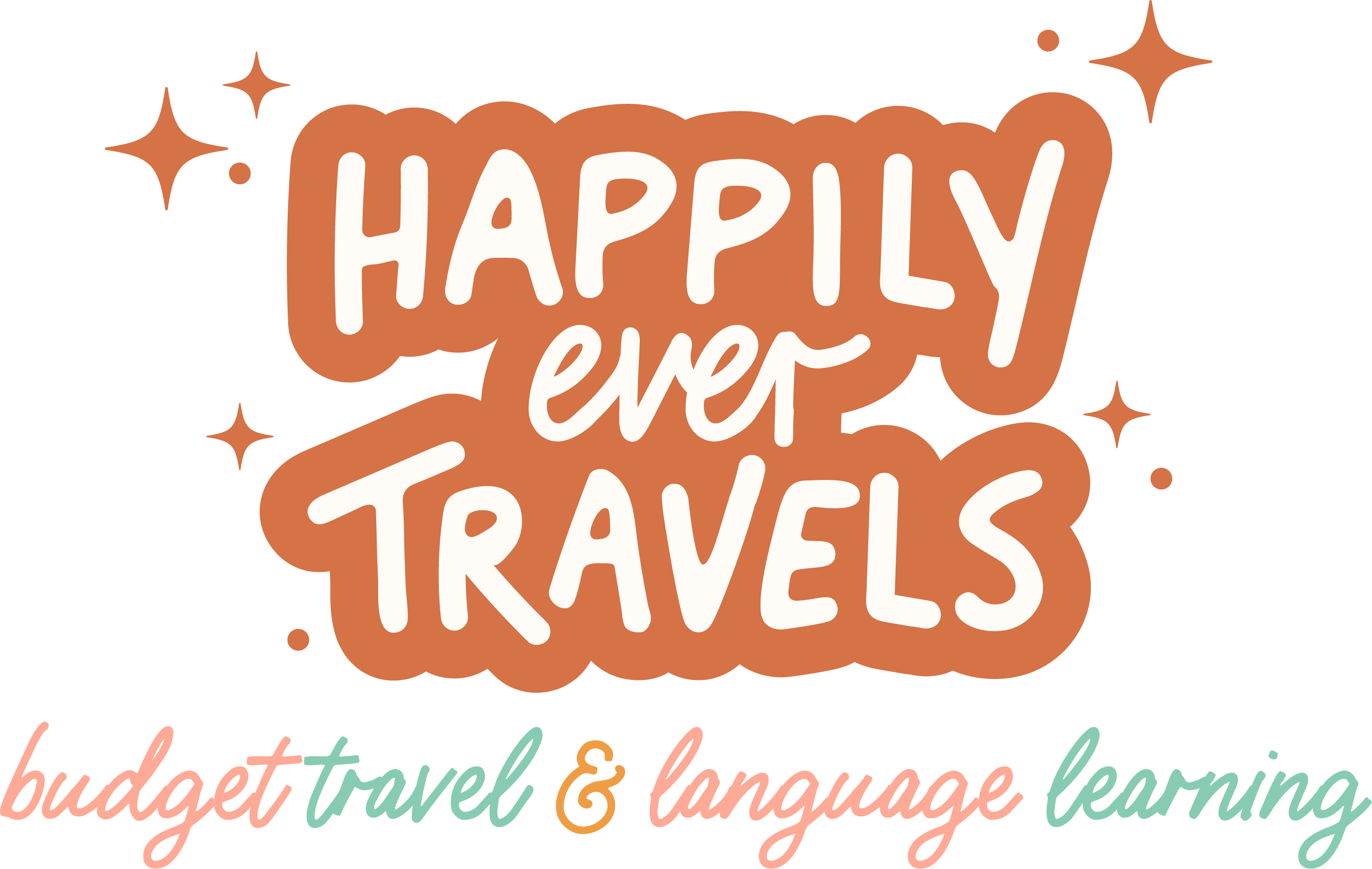
Leora Hughes
Friday 5th of August 2022
I don’t like having to earn crowns to release the next level of lessons. It’s frustrating to be denied access because of how long it’s taking me to pass to the next level.
Sagar Chand
Tuesday 4th of May 2021
Wow. The duome.eu website is quite cool. Didnt know about it. Thanks :)
duome
Wednesday 17th of August 2022
it was awesome to stumble across this blog entry and these comments ;)
admin
Friday 7th of May 2021
isn't it awesome? takes duolingo to a whole different level!
Rh4nne
Friday 19th of March 2021
Hi, your blog is amazing. I am working English to German courses and I wonder which Level I‘ll get after finishing the whole tree? I have read somewhere that it‘s A2 or B1. Is it right?
admin
Friday 19th of March 2021
Hey! I would guess that you would be closer to A2 unless you are supplementing with iTalki classes. You would definitely be B1 if you are taking classes or having conversations with native speakers along the way. Good luck with learning German! (: